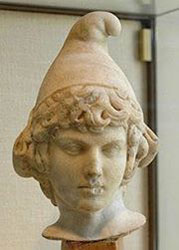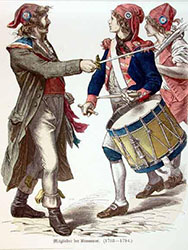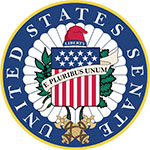The Voyageur Cap - A Brief History
Lady Una Redfox
 The Voyageur cap or Toque Hat is a brimless red or blue knit hat in a long, tube-like shape worn by French-Canadian fur traders or Voyageurs in the 17th and 18th centuries.
It was typically knitted wool and fit snugly around the forehead. In records these hats are also described as "worsted caps" "grey worsted caps"
"scarlet worsted caps" and "milled caps". Milling or Fulling is a type of controlled shrinking which causes the cloth to thicken.
The Voyageur cap or Toque Hat is a brimless red or blue knit hat in a long, tube-like shape worn by French-Canadian fur traders or Voyageurs in the 17th and 18th centuries.
It was typically knitted wool and fit snugly around the forehead. In records these hats are also described as "worsted caps" "grey worsted caps"
"scarlet worsted caps" and "milled caps". Milling or Fulling is a type of controlled shrinking which causes the cloth to thicken.
A Voyageur cap is similar in shape and style to the "Phrygian" or "Liberty cap" which dates back to the 4th century BCE. A Phrygian was commonly made of wool or soft leather. The Greeks also developed a military helmet with similar characteristics with the flipped-over tip and were usually made of bronze. These caps are depicted on vase-paintings and statues of Greek mythology. Over time The Phrygian cap spread to other peoples, including Trojans and Amazons who can be seen wearing these style of hats as military headgear.
In Republican Rome a similar cap called the "Pileus", which was made of felt, became a symbol of freedom and were given to slaves upon their emancipation. This hat was an outward sign of a voting Citizen of Rome. After the assignation of Julius Caesar, the Pileus became a symbol of the return to the Roman republican system.
In the 17th Century this type of hat became the Bonnet Rouges and was a symbol of revolutionary France. These hats were worn by revolutionaries and were often used to adorn statues and places in Paris, including the spire of a cathedral to prevent it from being torn down. This is first documented in 1790 adorning a statue on a lance carried by the goddess, Libertas. The working-class revolutionaries wore blue and red caps along with Sans-culottes to encourage solidarity and makes themselves easily recognizable by their allies. During the Reign of Terror these caps were often knitted by women who would sit next to the guillotine and knit between executions.
This red cap continues to be a symbol of freedom and can often be seen on the state flags of West Virginia, New Jersey and New York, on the seal of the United States Senate and the national coats of arms of Argentina, Bolivia, Colombia, Cuba, El Salvador, Haiti, Nicaragua and Paraguay.
To learn to make your own Voyageur Cap, click here.
Additional Resources:
https://en.wikipedia.org/wiki/Phrygian_cap
https://en.wikipedia.org/wiki/Symbolism_in_the_French_Revolution#Liberty_cap
http://www.northwestjournal.ca/XVII1.htm
Thank you Baron Klaus Jager for the pattern.

2nd Century CE Phrygian cap

French Revolutionaries wearing Bonnets Rouges

Paris of Troy 117-138 CE

Seal of the United States Senate